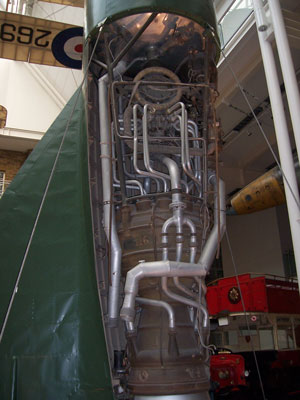
WWII: Maginot Line | Normandy | V-Weapon Sites | Arnhem
Further afield: Crete
| Home Tracing Military Ancestors Travel Advice CWGC Cemeteries Iron Harvest News Book Reviews Glossary Links Contact Me V-Weapon Sites:
 
|
V-2 Rocket
The V-2 or A-4 rocket was the ancestor of all modern space rockets and ballistic missiles. With a top speed of 5,200 feet per second, unlike the V-1, it was invulnerable to Allied counter-measures and the 980 kg warhead combined with a high terminal velocity, ensured widespread destruction on impact. The V-2 was developed at Peenemünde by a team which included Wernher von Braun, who was later to supervise the Saturn V moon rocket programme for the United States. The rocket utilised supersonic aerodynamics, analogue computer guidance control and liquid propellant, the flow of which was easier to control than solid fuel. Preliminary work began in 1936 but with such complex and cutting-edge technology, it was not until September 1944 that the V-2 offensive could begin in earnest. By then time was beginning to run out for the Third Reich.
It was originally intended to launch the rockets against England from specially built assembly and firing bunkers in northern France, such as those at Bunker D'Eperlecques and La Coupole. However, the threat posed to Britain could not be ignored. As soon as the launch sites were discovered, the RAF and USAAF launched a series of bomber raids to destroy them during construction, part of what was known as Operation Crossbow. This pre-emptive action caused the Germans to switch the V-2's onto mobile launchers, which were harder for the Allies to target (remarkably similar to Saddam Hussein's Scud missile strategy against Israel during the First Gulf War). Altogether 3,172 V-2 rockets were launched from September 1944 until March 1945. Of these, 1,358 struck London killing and wounding over 9,000 civilians. As the Allies moved across northern France and into Belgium following D-Day, however, the Germans switched their main effort to the Belgian port of Antwerp, vital in the supply of the Allied armies and only a short distance from the German border. Altogether 1,610 V-2's hit Antwerp causing devastation and much loss of life. One rocket alone, which hit a cinema, caused 567 deaths. And yet, as with the V-1 offensive, the effect on the Allied war effort of such random and indiscriminate bombardment of its civilian centres was negligible. It did not prevent the Allies from landing on the continent of Europe or the Russians rolling forward inexorably towards Berlin from the east. Worse for the Nazi regime, the cost of the two programmes was astronomical. The V-2 programme alone cost over 600 million Reichsmarks, for which, it has been estimated, Germany could have produced 48,000 tanks. It should also not be forgotten that an estimated 20,000 German prisoners of war and slave labourers died during the V-2 construction programme, from overwork, malnutrition and disease – more than were killed by the V-2 offensive. |

